Seiko 6138-8020 Rebuilt / Refurbished
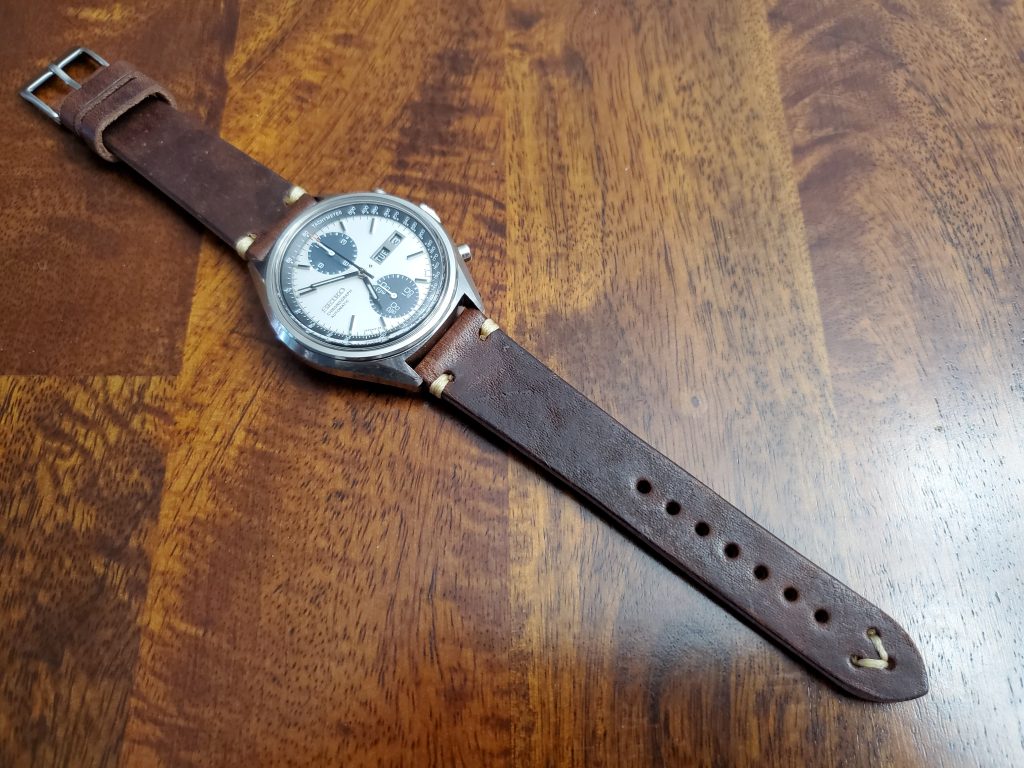
This is my new Seiko 6138-8020 Panda chronograph. It is fully rebuilt from old scrap, and new aftermarket parts. Collecting this watch has been on the top of my list for years. Really, ever since I got into watches. The price tag on a decent one is more than I wanted to spend. Even if you do get your hands on one, there is no telling what has been done to it over the past 45 years.
Instead of finding the exact watch which would meet my criteria, I chose to build one for myself. I kept my eyes out for any auctions of scraps parts, or project watches. I started by getting my hands on a 6138b movement. Then I found someone selling just the stainless steel body. I sourced as many parts as I could from original sources. Anything I couldn’t find I was able to get from a Dutch company “Speedtimerkollektion”. The glass (or in this case acrylic) was sourced from an aftermarket seller “Sternkreuz” which I was referred to by several Seiko enthusiasts. The hardest part to get my hand on was the movement holding ring. It is unique to this watch, just like the body, and is not in any other Seiko models. Once I had everything in hand, I gave the body a light hand cleaning as I was afraid polishing would ruin the sharp lines of the body. Then, I brought the movement, dial, and hands to a local watch repair shop because I didn’t want to risk trying to align the delicate sec hand and subdial hands, reassembled the remainder of the watch, and here it is.
I originally posted this project over on the Watches Subreddit, and subsequently ended up with a ton of questions on where and how I purchased the various parts for this project. Below is a more or less step by step guide on how I put this all together.
Build Process
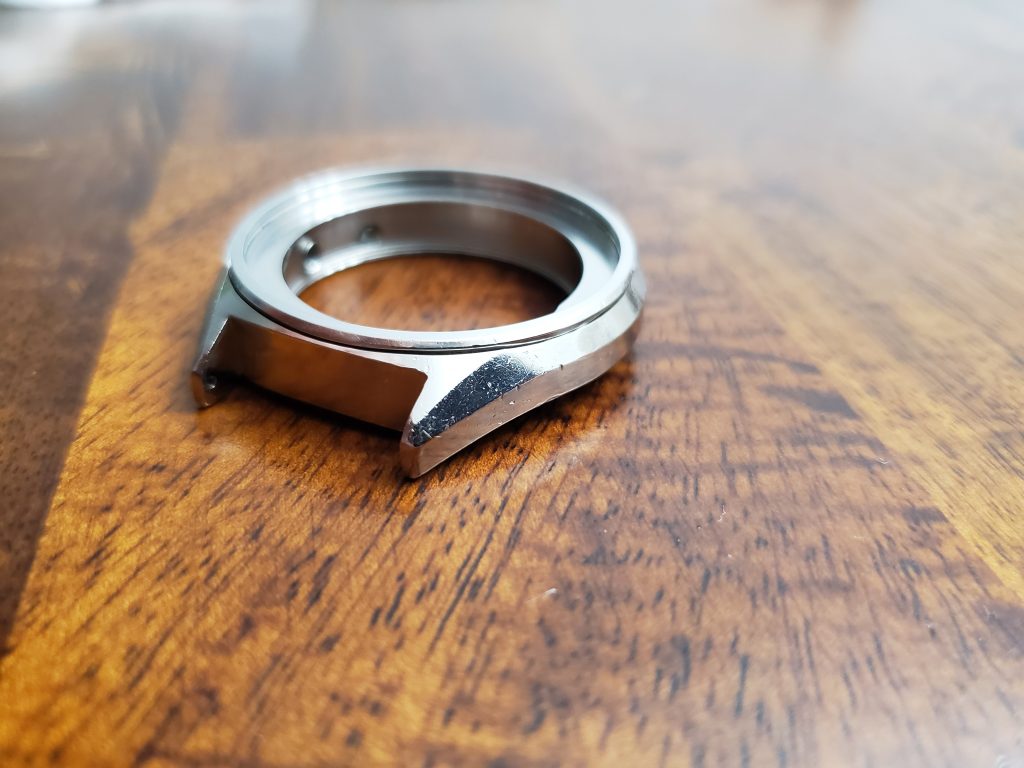
The first thing I did was source the body. The body is really 4 separate parts. There is the main body, or case, and the bezel ring, which are in the picture above. Both of these parts are made of solid stainless steel. and are unique to the 6138-8020 Panda. Most cases will come with the bezel ring as they are exceptionally difficult to remove from each other on assembled. It is just a friction fit but years are grime usually holds the pair firmly together.
Not pictured is the movement holding ring, and case back. The holding ring is a small ring that centers the movement inside the case and holds the pushers in place. This piece is again unique to the 6138-8020. However, it can be sourced from both the panda or gold/black variant making it a little less scarce. The case back is probably the easiest part to get you hands on. The back can be sourced from either the panda or gold/black variant. Both parts are mechanically identical. The only difference being the gold/black back will be stamped with “SGP BACK ST. STEEL” indicating that it originally came from a “Seiko Gold Plated” case, and an original panda back will be stamped “STAINLESS STEEL”. Both backs are mirror finish silver stainless steel.
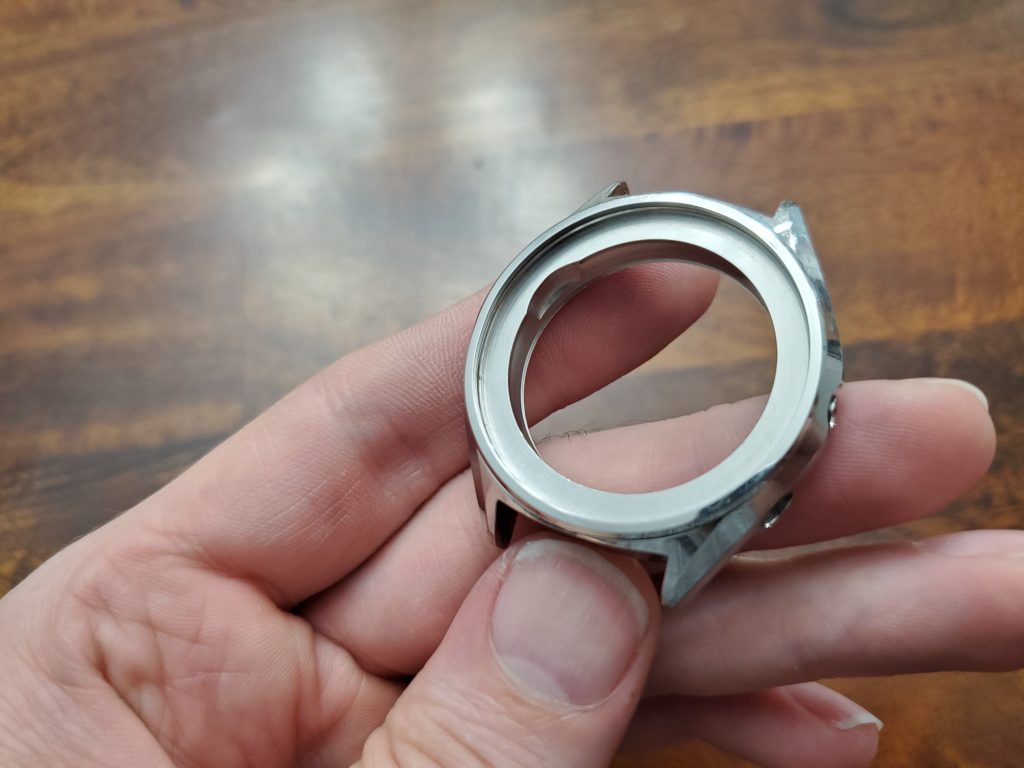
Here is my hand polished case with the bezel ring installed. I strongly recommend removing the bezel ring prior to polishing. The amount of grime that can develop under that ring is just disgusting. If the ring was factory installed, there will be a small notch right around the 9 o’clock position where you can remove the ring using a small case knife.
I elected to hand polish the case. The are some very beautiful sharp lines on this case, specifically on the sides and around the lugs. I was afraid machine polishing round these lines, and also remove a lot of the character (The watch is going on 50 years old after all). To polish the watch I used a Cape Cod Cloth. These can be purchased on Amazon for around $6.00. There was one very small ding on the bottom of the case which caused a burr. This was handled by carefully removing the burr with a diamond emery file, then wet sanding the area with progressively finer papers all the way up to 3000 grit, before a final polishing with the Cape Cod Cloth.
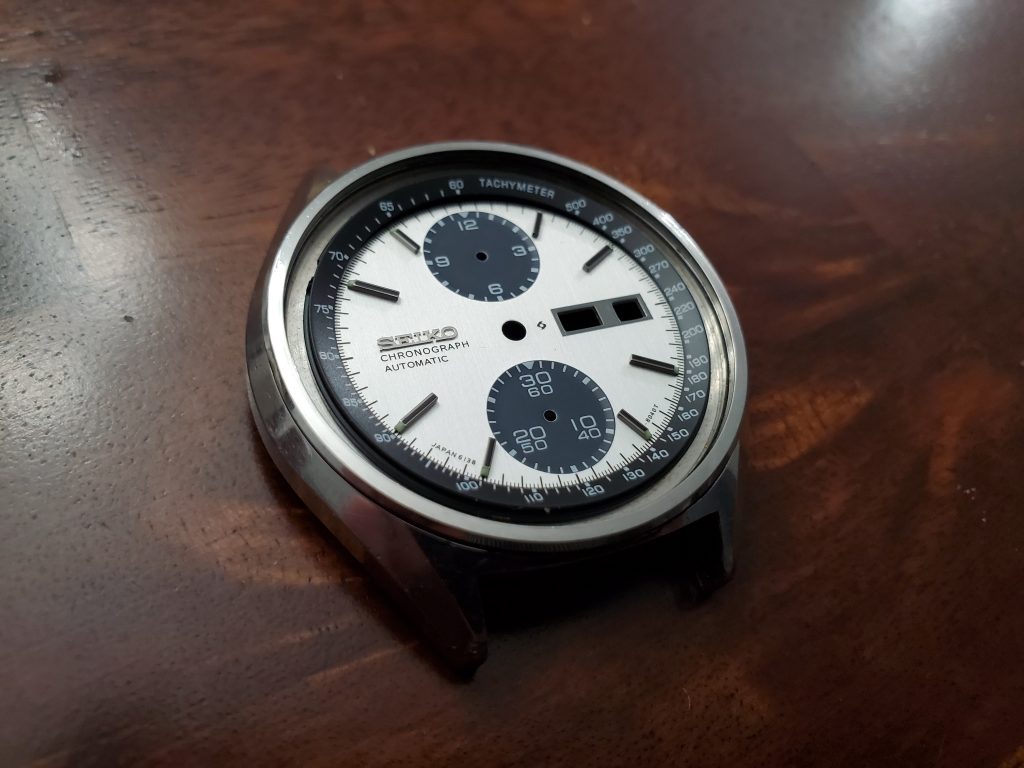
Here is the new aftermarket dial and original chapter ring. The chapter ring (chronograph ring) on the 6138-8020 is fairly easy to get original. The dial is very difficult. Most original 6138-8020 panda dials are heavily patina’d, or just outright falling apart. If you do get a great condition original it will easily be the most expensive part of the rebuild. This is why I went with an aftermarket. I purchased this part from a reputable aftermarket seller and it is as close to original as you are going to get.
If you do go the aftermarket route be careful of cheap imitations. The real panda dial is not white it is much more of a pearlescent color and has vertical lines resembling brushed aluminum. The subdials are also not black, they are a dark gray and have no pattern to them aside from the slight bevel around the inside edge.
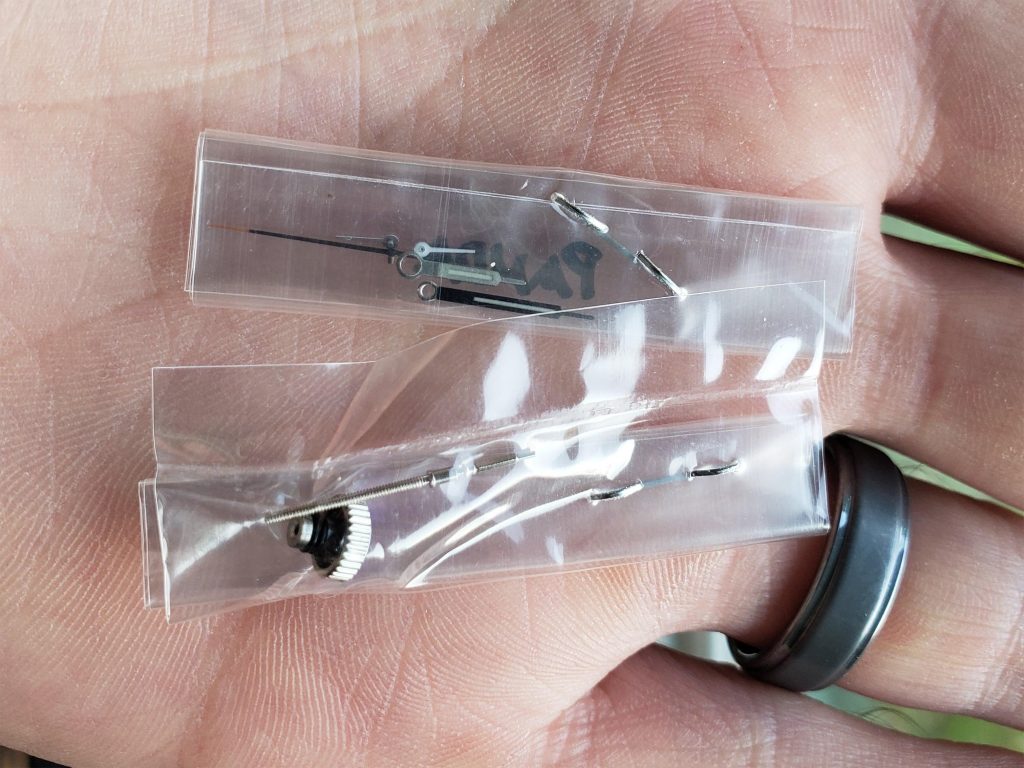
The next step was to source all the small accessory parts. All of these were purchased from an aftermarket shop in The Netherlands “Speedtimerkollektion” They sell a combination of new and aftermarket parts at what I would consider to be reasonable prices. Pictured above is a set of hands which are unique to the 6138-8020 panda. The white subdial hands are however, shared with the black/gold variant. Also pictured is a 6138-8020 crown, and a universal 6138 crown stem. The crown is the same model used on the 6138-0030, -0011, and -3003. Because each of these watches have different diameter cases, the stem is universal and needs to be trimmed to the appropriate length.
Not shown are the pushers with springs, replacement crystal, and case gasket set. Pushers are very easy to get as aftermarket and used pieces the pushers are the same as those used on the 6139-7100. New and aftermarket pushers are, in my opinion, indistinguishable. The replacement crystal (which is actually acrylic in the case of the 6138-8020) came from a company called Sternkreuz. If you want to find an original, the Seiko part number is 350T02ANS. The aftermarket Sternkreuz part is XAC351.537. I personally prefer the Sternkreuz replacement as it is much more scratch resistant than the original acrylic.
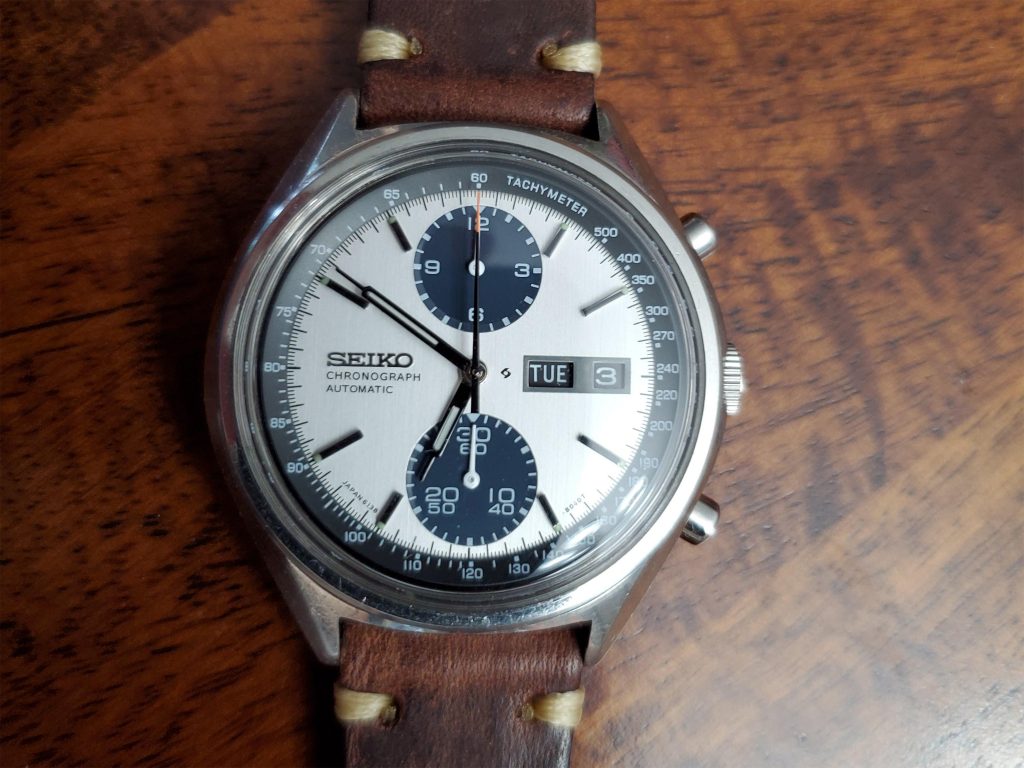
Once all that was done I had the full watch professionally assembled with a donor movement from exceptionally worn 6138-8020 black/gold variant.
There are a few roadblocks you may hit along the way before you can fully assemble you watch. First is the day and date wheels associated with your movement. Some 6138 movement watches, for example the -0040 Bull Head, mount the movement 90° offset with the crown at the 12 o’clock. Because of this, the day and date wheels are printed vertically to be read at the 6 o’clock on the dial instead of horizontally as pictured above.
Next, you have to ensure you get the day and date wheels that match your language. Since this watch was sold world wide you will find wheels that are Japanese/English, English/Spanish, English/Arabic, and other variants so be sure to get the correct one.
Next, if your movement didn’t come with a -8020 dial, you will need to find a dial holding ring. This is a simple spacer that goes between the dial and movement to keep it aligned. This piece is unique to the 6138-8020 and 6138-7000 and fairly easy to locate on its own since people often sell damages 6138’s for parts.
Last, you should get a new gasket set. even if you never plan on getting your watch wet, you are going to want to keep moisture out at all costs. This includes humidity. Get a new set of gaskets for your pushers and case back. They are very cheap and usually sold together.
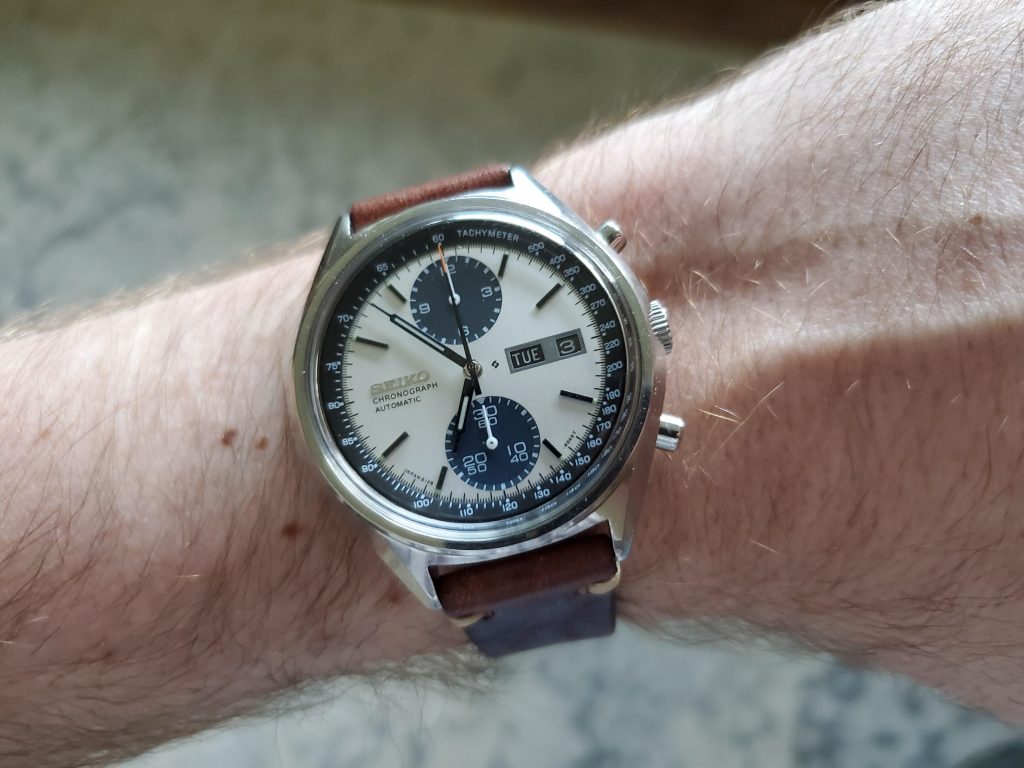
And that was the whole build… Here is a final picture of the completed watch on my wrist. It took a few months to get everything together but I am perfectly happy with the results. All the parts cost about 1/3 of what buying the watch outright would have cost me, and I got to make exactly what I wanted. The last thing to note is the lug width of the 6138-8020 is 19mm, which is a fairly odd size today. Because of this, I had a local independent seller make me a band out of full grain leather.
Thanks for looking!






Could you explain how to remove the Crystal? and how do you put it back? Thanks
Hi there, the dial looks great for an aftermarket. Did you get yours from Speedtimerkollektion as well?
The dial and Tachymeter ring were purchased as a pair from “seikosis” on ebay. They are a reputable dealer of new, used, and aftermarket watch parts.
You mentioned the chapter ring is easy to find genuine but I can’t seem to find any available. Where did you get yours?
I got mine on e-bay. Depending on what you are looking for you have a few options.
If you want authentic, they come up pretty often on https://speedtimerkollektion.com/ They have an e-bay shop as well, but you are leaving that up to luck and time.
If you want aftermarket, They are often sold as a pair with the dial. You just have to be careful not to buy mass-produced junk. They are a hand full of search terms to use which may help. Sometimes people refer to it as “Bezel” “Bezel Insert” “Dial Ring” “Tach Ring”.